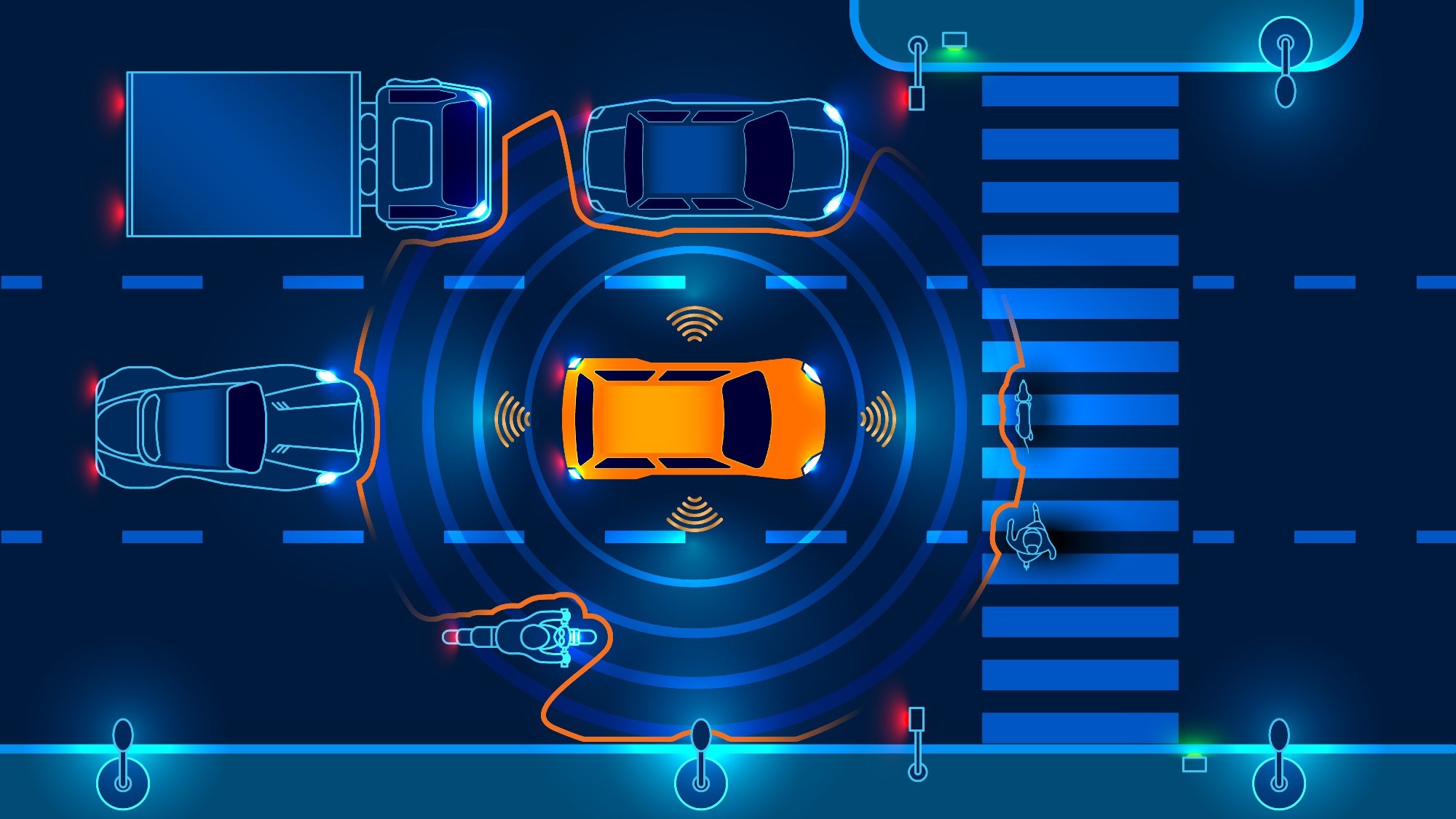At the Technical University of Munich (TUM), scientists have come up with autonomous driving software which distributes risk on the street fairly.

Image Credit: Andrey Suslov/Shutterstock.com
The algorithm included in the software is known to be the first to integrate the 20 ethics suggestions of the EU Commission expert group. This makes considerably more distinguished decisions compared to earlier algorithms.
The operation of automated vehicles is to be made considerably safer by evaluating the altering degrees of risk to motorists and pedestrians. The code is made available to the general public as Open Source software.
Technical realization is not the only hindrance to being mastered before separately driving vehicles that could be enabled on the street on a large scale.
Ethical questions play a significant role in developing equivalent algorithms: Software has to be able to tackle unpredictable positions and make essential decisions in case of a forthcoming accident.
Scientists at TUM (Technical University of Munich) have currently come up with the first ethical algorithm to distribute the levels of risk in a fair manner instead of operating on an either/or principle.
Around 2,000 scenarios, including vital situations, were tested and distributed throughout several streets and regions like the USA, Europe, and China. The study work reported in the journal “Nature Machine Intelligence” is the collaborative outcome of a collaboration between the Chair of Automotive Technology and the Chair of Business Ethics at TUM’s Institute for Ethics in Artificial Intelligence (IEAI).
Until now, autonomous vehicles were always faced with an either/or choice when encountering an ethical decision.
Maximilian Geisslinger, Scientist and Chair, Automotive Technology, Technical University of Munich
Geisslinger added, “But street traffic can't necessarily be divided into clear-cut, black-and-white situations; much more, the countless gray shades in between have to be considered as well. Our algorithm weighs various risks and makes an ethical choice from among thousands of possible behaviors—and does so in a matter of only a fraction of a second.”
More Options in Critical Situations
On behalf of the EU Commission in 2020, the fundamental ethical parameters on which the risk evaluation of the software has been oriented were specified by an expert panel as a written recommendation. The suggestion contains fundamental principles like a priority for the worst-off and the fair distribution of risk among all road users.
To translate such rules into mathematical calculations, the research group categorized vehicles and persons moving in street traffic based on the risk they present to others and their willingness to take risks. For example, a truck could lead to serious damage to other traffic participants, while in several scenarios, the truck itself will only experience small damage.
The contrary is the case for a bicycle. In the next step, the algorithm was told not to surpass the utmost acceptable risk in several respective street situations. Besides, the research group added variables to the assessment which account for responsibility on the part of the traffic participants, for example, the responsibility to follow traffic regulations.
Earlier methods treated serious situations on the street with just a small number of possible maneuvers; in unclear cases, the vehicle stopped. At present, the risk assessment integrated with the researchers’ code leads to more possible degrees of freedom with minimal risk for all.
An example will demonstrate the approach: An autonomous vehicle wishes to overtake a bicycle, while a truck is approaching in the oncoming lane. All the available data on the surroundings and the individual participants are used at present.
The study questions if it is possible for the bicycle to be overtaken without driving in the oncoming traffic lane and simultaneously retaining a safe distance to the bicycle. Also, what is the risk posed to each respective vehicle, and what risk do such vehicles add up to the autonomous vehicle itself?
In unclear cases, the autonomous vehicle having the new software always waits until the risk to all participants is acceptable. Aggressive maneuvers are prevented, while simultaneously, the autonomous vehicle does not just freeze up and suddenly jam on the brakes. Yes and No are immaterial and are replaced by an evaluation consisting of a big number of options.
Our framework puts the ethics of risk at the center. Until now, often traditional ethical theories were contemplated to derive morally permissible decisions made by autonomous vehicles. This ultimately led to a dead end, since in many traffic situations there was no other alternative than to violate one ethical principle.
Franziska Poszler, Scientist and Chair, Business Ethics, Technical University of Munich
Poszler added, “In contrast, our framework puts the ethics of risk at the center. This allows us to take into account probabilities to make more differentiated assessments.”
The scientists stressed the fact that even algorithms rely on risk ethics—even though they can make decisions depending on the basic ethical principles in every possible traffic situation. However, they still cannot assure accident-free street traffic. In the future, it will also be essential to consider additional differentiations like cultural differences in ethical decision-making.
Software Now to Be Tested in Street Traffic
So far, the algorithm developed at TUM has been confirmed in simulations. In the future, the software will be tested on the street by making use of the research vehicle named EDGAR. The code embodying the outcomes of the research activities is available as Open Source software. Hence, TUM is contributing to the growth of feasible and safe autonomous vehicles.
Journal Reference:
Geisslinger, M., et al. (2023) An ethical trajectory planning algorithm for autonomous vehicles. Nature Machine Intelligence. doi.org/10.1038/s42256-022-00607-z.